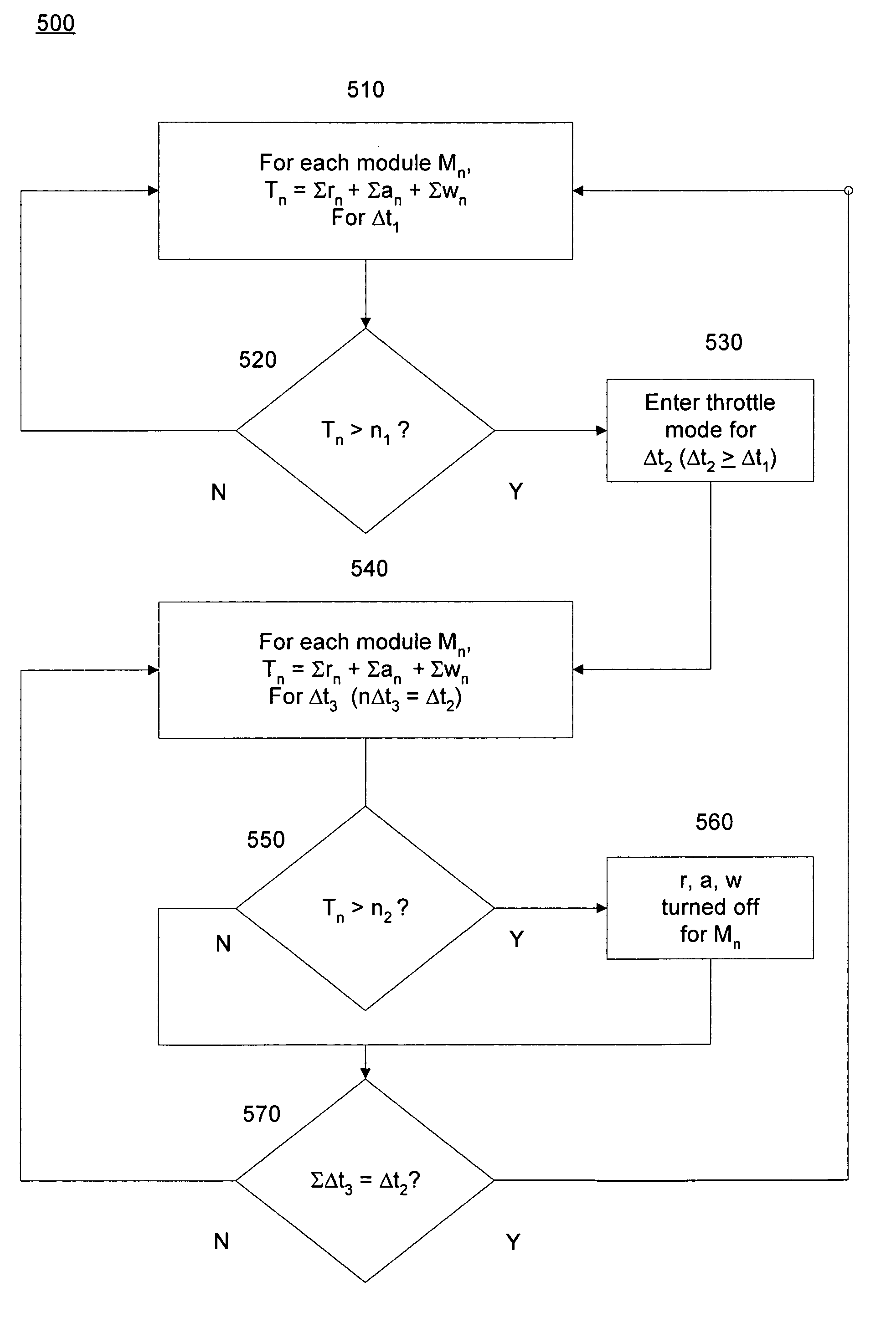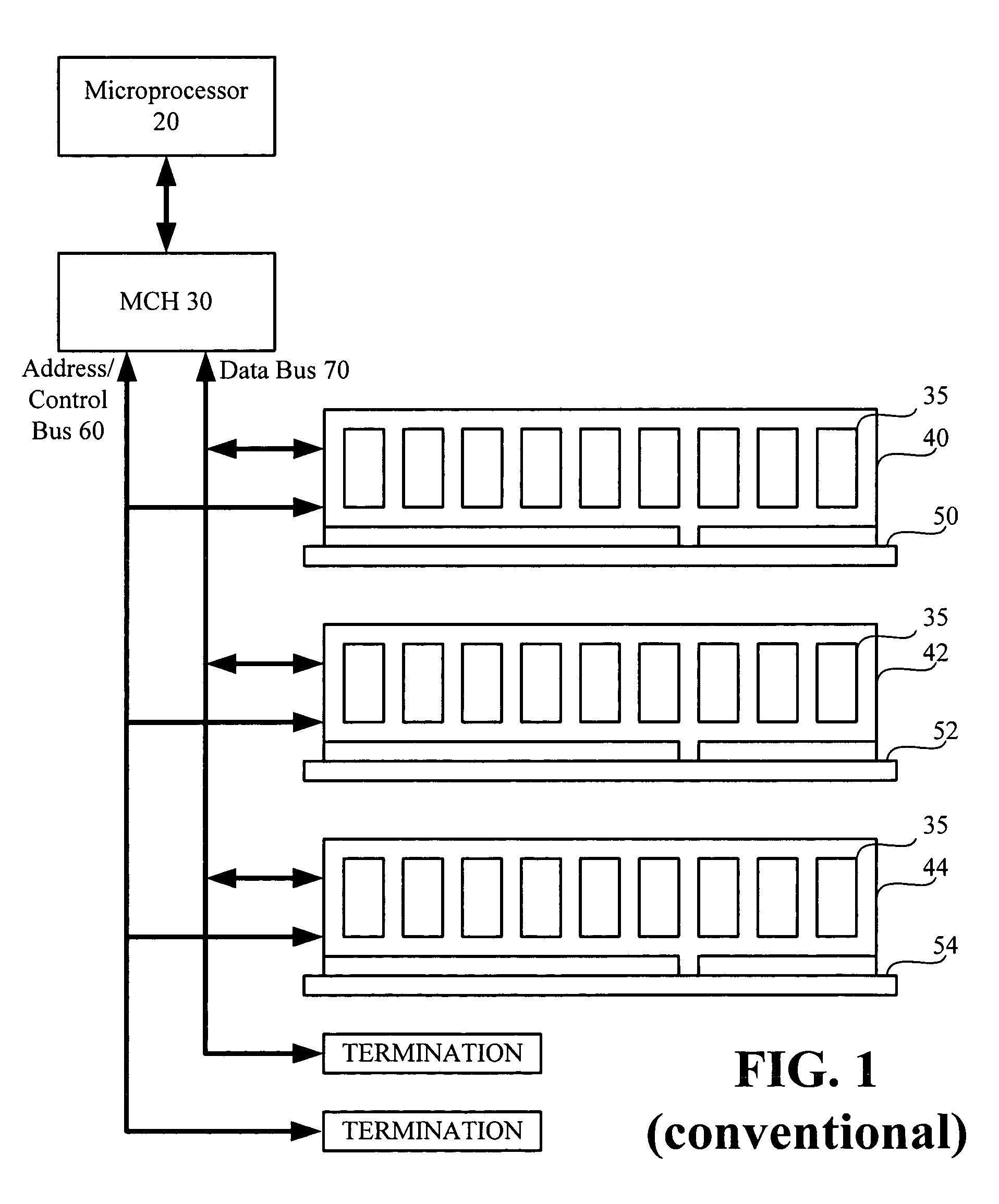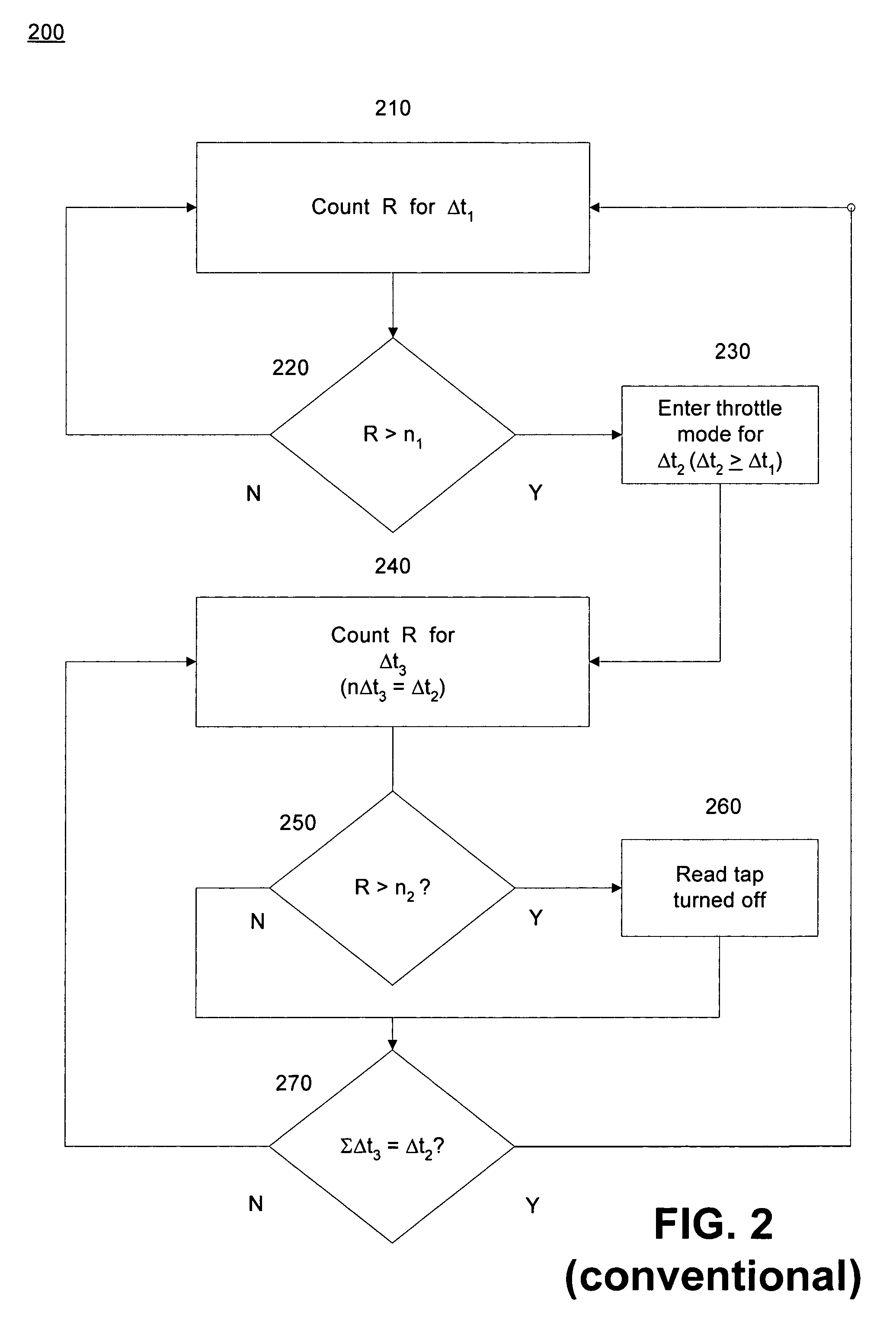System and method for thermal throttling of memory modules
a memory module and thermal throttling technology, applied in the field of system and method for thermal throttling of memory modules, can solve the problems of power viruses such as these, the potential to destroy the particular memory module that is attacked, and the memory system might become vulnerable to damag
- Summary
- Abstract
- Description
- Claims
- Application Information
AI Technical Summary
Benefits of technology
Problems solved by technology
Method used
Image
Examples
Embodiment Construction
[0017]FIG. 3 is a block diagram illustrating some components of an example memory subsystem 100 utilizing DIMMs that may be used in conjunction with embodiments of the invention. It should be emphasized that embodiments of the invention are not limited only to memory subsystems that are implemented with DIMMs. For example, embodiments of the invention work equally well with memory subsystems that utilize single inline memory modules, or SIMMs. Thus, the generic term “memory module” is intended to include DIMMs, SIMMs, and other memory modules that include a plurality of memory devices. The number of memory modules in the memory subsystem may be more or less than the number illustrated in FIG. 3.
[0018]Referring to FIG. 3, the memory subsystem 100 includes a host 110, four memory modules M1, M2, M3, and M4, four memory channels 112, 122, 132, and 142, and a low-speed system management bus (SMBus) 160. The host 110 includes four counters 111, each counter corresponding to one of the me...
PUM
 Login to View More
Login to View More Abstract
Description
Claims
Application Information
 Login to View More
Login to View More - R&D
- Intellectual Property
- Life Sciences
- Materials
- Tech Scout
- Unparalleled Data Quality
- Higher Quality Content
- 60% Fewer Hallucinations
Browse by: Latest US Patents, China's latest patents, Technical Efficacy Thesaurus, Application Domain, Technology Topic, Popular Technical Reports.
© 2025 PatSnap. All rights reserved.Legal|Privacy policy|Modern Slavery Act Transparency Statement|Sitemap|About US| Contact US: help@patsnap.com



